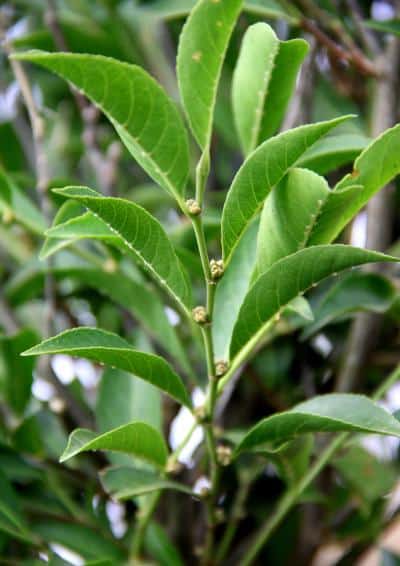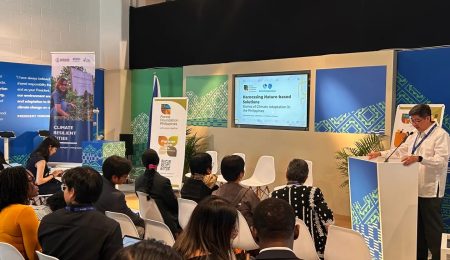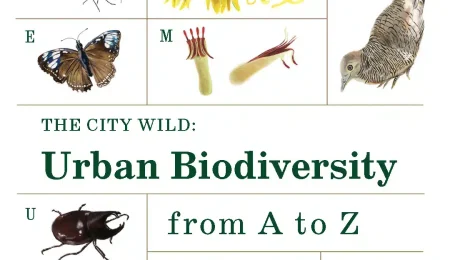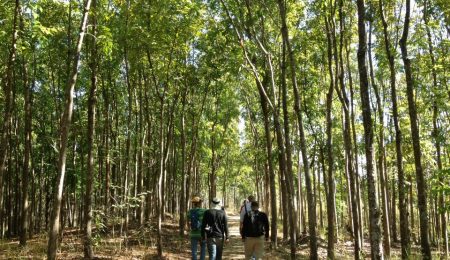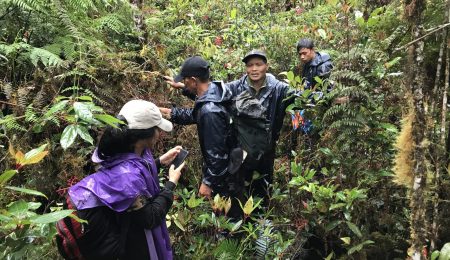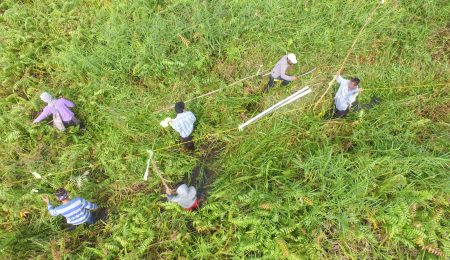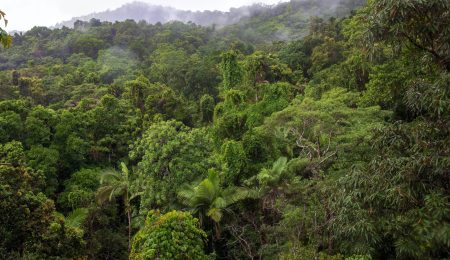Highlights
- Scientists discovered three species of nickel (Ni) hyperaccumulating plants in the Philippines in 2014 and 2015. The discovered species can accumulate around 10,000 to 18,000 ppm of Ni in their leaves which is equivalent to 1.0-1.8% per unit weight.
- Maximizing the potential of these hyperaccumulators can be used in mined-out areas as part of an ecological restoration strategy.
Filipino scientists discovered three endemic plant species in the country that hyperaccumulate or absorb high levels of nickel (Ni). This poses an opportunity for restoring landscapes that have been degraded due to mining activities.
Rinorea niccolifera was discovered in 2014 in Zambales. According to Edwino Fernando, professor emeritus at UPLB’s College of Forestry and Natural Resources and lead author of the paper, it can accumulate up to 18,000 ppm of nickel in its leaf tissues which is equivalent to 1.8% per unit weight.
“Not all plants can absorb heavy metal because it’s toxic to the plant. That’s why this plant is very unique as it can accumulate much nickel in the leaves. Theoretically and potentially, there are only about 700 species throughout the world. In the Philippines, there’s about 25 of them.”
Dr. Edwino Fernado in Gubatbp. Podcast episode “The Science and Culture of Naming Species“
In 2015, scientists discovered two more species that belong to the genus Phyllanthus: P. erythrotrichus which was discovered in Zambales, and P. securinegoides which was found in Surigao del Norte can both accumulate more than 10,000 ppm of Ni in the leaves. For Ni concentration in the roots, the former can accumulate up to 1,195 ppm while the latter can accumulate up to 4,600 ppm. Plants that can accumulate Ni of 1000 ppm (0.1% per unit) in shoots are considered as Ni hyperaccumulators.
This indicates that these species have significant potential in phytoremediation and restoration of mined-out nickel areas in the country.
Nickel mining in the Philippines
According to the Philippine Statistics Authority, Nickel accounts for about 16 percent of the gross metallic mineral resources of the country to date. In the first six months of 2021, Ni contributed to the bulk of the country’s mineral production. Ni and its processed products comprised 53.44 percent (amounting to PhP36.68 billion) of the country’s combined metallic production value in that year. Data from DENR’s Mines and Geosciences Bureau also shows that Ni production consistently leads the country’s metallic mineral production.
However, mining activities in the country have caused lasting damage to the underlying ecosystems where they are located. Suppose a mining operation strips about 20 to 25 meters of soil from an area. This may obliterate gullies and streams with drastically transformed river flows and water quality. This will also lead to increased sediment loads that eventually reach coastal waters.
Rehabilitation of mined-out areas through phytoremediation
The botanical explorations by Filipino scientists to seek metal hyperaccumulating species were actually part of the Program on the Rehabilitation and Restoration of Mining Areas through Phytotechnologies. This project is funded by the Department of Science and Technology – Philippine Council for Industry, Energy, and Emerging Technology Research and Development (DOST-PCIEERD). The Program aims to identify the diversity of metallophytes in the Philippines. Initially, it focuses on the hyperaccumulators of the country’s significant mineral reserves: nickel, copper, and arsenic. Researchers thoroughly study the possibility of metal recovery from the potential hyperaccumulators to develop a cost-effective and environment-friendly mining strategy. Metallophytes can be cultivated eventually as biostabilizers during or in post-mining activities through new technologies such as phytoremediation.
Phytoremediation is an approach that uses plants to treat soil and groundwater contaminated with toxic waste and compounds. Among the techniques under phytoremediation is phytoextraction. In this method, plants transport and accumulate heavy metals from soil into harvestable parts of roots and the plant’s above-ground shoots. Meanwhile, phytomining is a more advanced technology of phytoremediation that is performed by planting metallophytes in metal-rich areas. The strategy’s objective is to produce low volume ‘bio-ore,’ a potentially cost-saving mining technology.
In the UN Decade of Ecological Restoration, phytoremediation poses a significant strategy that can be considered to address the degrading status of ecosystems of the country.
Banner image credit: Dr. Edwino S. Fernando

